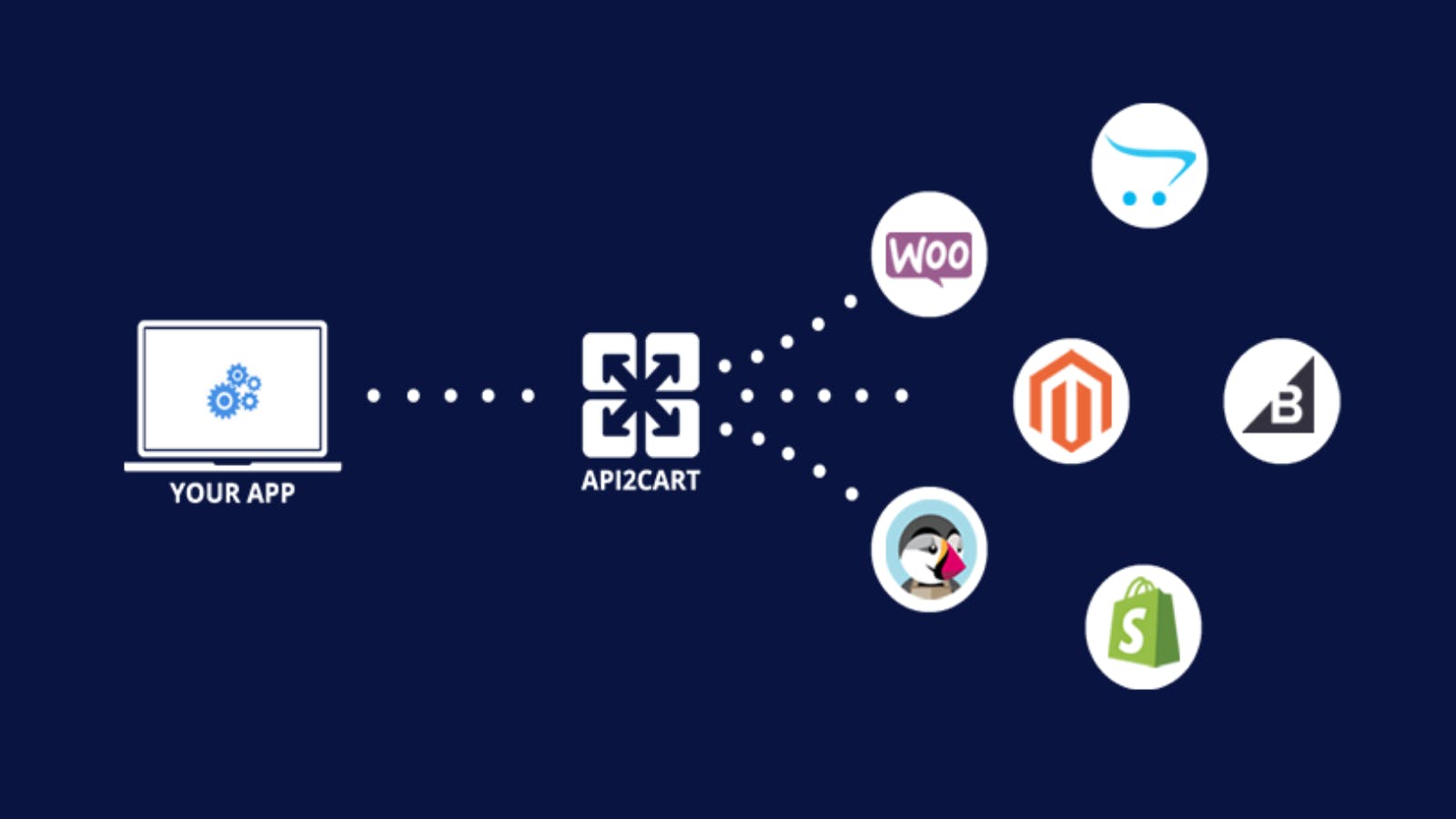The eCommerce industry is evolving with each passing day. The vendors who serve as B2B eCommerce software providers are all in to provide their clients with the best automation experience with their software. So if you are a SaaS vendor wanting to stay ahead of your competitors, you need to think smartly to improve your services and make them better than your competitors.
Therefore, we have the ultimate API integration tutorial ready for you to improve your positioning in the market and offer the best to your e-retailer clients.
You need this tutorial because API integration is your go-to solution to connect your eCommerce software with shopping platforms like Magento, Shopify, WooCommerce, BigCommerce, etc.
With such an integration, you can allow your software to provide its core functionality to your clients, which is impossible without the data related to orders, customers, products, and categories. API integration, therefore, helps you transfer this data from eCommerce platforms to the software, acting as a bridge between them.
So if you want to know more about APIs and eCommerce integration, continue reading this API integration guide.
What is API Integration?
An application programming interface or API is a software code that allows two applications to connect with each other and transfer data from one application to another. In other words, an API is an interface or intermediary between two software that allows the latter to communicate with each other.
With the help of APIs, you will be able to connect your software with third-party applications and software to improve the functionality of your eCommerce software without having to rebuild it from scratch. Whatever features you need, you can just add them with API integration.
API integration is, therefore, the tying up of two applications with each other. With this connection, these applications will be able to exchange data between them.
As an eCommerce software vendor, you can utilize this integration to your benefit. You can connect your software with multiple applications and systems to extend its capabilities and provide full-fledged SaaS solutions to your clients. This API integration tutorial will also teach you how such an integration would work for your business use case.
How Does API Integration Work?
Taking this API integration tutorial ahead, let’s see how API integration works.
An API works based on requests and responses. So whenever two applications connect with each other, they communicate via these requests and responses. The work of API integration is to translate these requests and responses into a compatible format, so it’s easy to process the input and share a meaningful and understandable output.
So with the help of API integration, the API layer of one system interacts with the API layer of another system and transfers the data between them as per the requirements of the software.
If you are in the eCommerce SaaS space, you know how important it is for you to understand that eCommerce API integration can help you serve your clients better. You can connect with all the eCommerce platforms like WooCommmerce, Magento, Amazon, Shopify, etc., on which your clients have built their e-stores.
Now, eCommerce API integration primarily allows you to get data related to orders, products, categories, and customers from the eCommerce platforms (the e-stores of your clients). The integration is important for the software including:
- Inventory management system
- Warehouse management system
- Shipping management solution
- Order management system
- Repricing and pricing management system
- Product information system
- Marketing automation system
- Multi-channel system
- Point of sale systems
- Enterprise management system (ERP)
- Chatbots
- Social commerce
All the software mentioned above need data to perform their core operations and provide the e-retailers with the functionality they need. So let’s see ahead in this API integration tutorial about the requirements and time needed to develop eCommerce integration.
How Long Does it Take to Integrate with APIs of eCommerce Platforms?
Every eCommerce platform has its own API and, therefore, a different logic and architecture. Also, your clients have their e-stores built on multiple eCommerce platforms, so you’ll have to integrate with each of those platforms.
So if you build a development team in-house to develop these integrations, it has to understand every API beforehand. Each integration can take up to 4 months. So add up all the integrations you wish to build along with their complexity. Can you imagine the time it will take you to complete all of them?
Apart from this, shopping platforms keep updating their APIs for security reasons. So every time a shopping platform updates its API, you’ll have to upgrade your integrations and keep maintaining them to ensure they are functioning well. This takes up another chunk of your developers’ time.
All the processes mentioned above eat up your time as well as your money and resources. But if you want a feasible option for developing integration, you can use a third-party integration service like API2Cart.
API2Cart is a unified API that allows eCommerce software vendors to connect their software with more than 40 eCommerce platforms and marketplaces in one go. You don’t have to integrate with individual platforms spending your resources on each of them.

You just integrate with API2Cart, and the latter connects your software with all the desired eCommerce platforms on which your customers have built their e-stores. Moreover, it also looks after further integration maintenance and upgrades.

